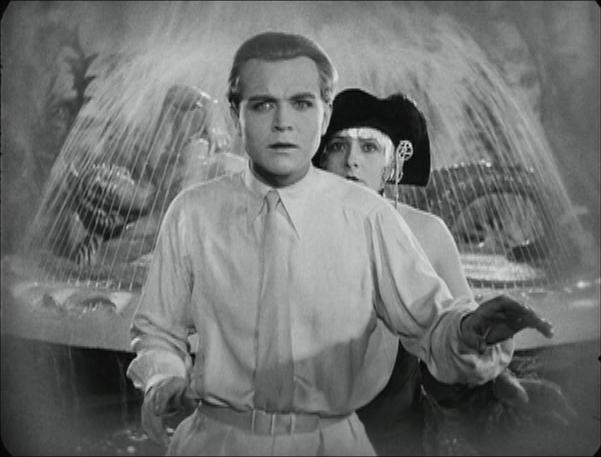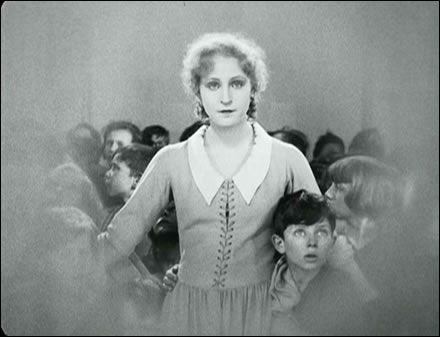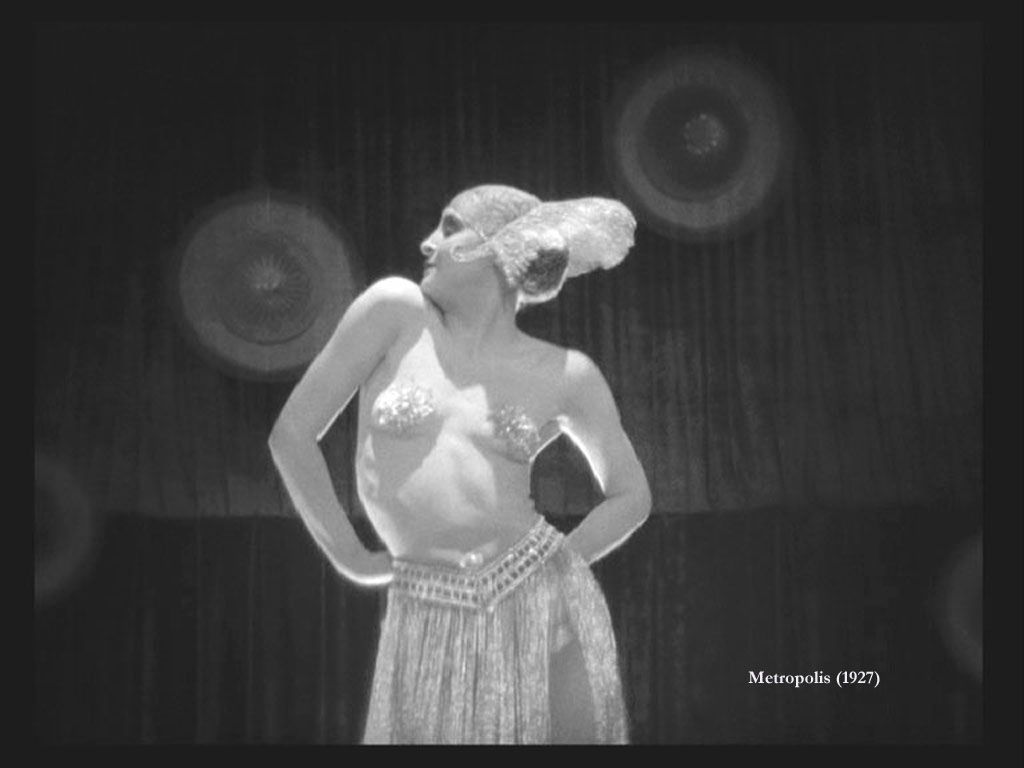Come to think of it, there's a lot more visual symbolism borrowed from Fritz Lang's Metropolis in the rough draft than I initially realized.
The protagonist of Lang's film is Freder, a young man born to privilege who yearns for a more fulfilling life. Like the rough draft's Annikin Starkiller, and the final film's Luke Skywalker, Freder always wears white.

Freder's love interest is Maria, a beautiful girl who makes clandestine visits to the underground city of the laboring classes, where she preaches a gospel of social justice and equality.

As per her name and her light-colored clothing, Maria is obviously a Virgin Mary figure.
Freder's father, Joh Fredersen, is the leader of Metropolis. Fredersen fears that Maria's preaching could lead to a rebellion of the working classes against bourgeois rule, destroying his shining city forever.
Accordingly, Fredersen enlists the mad scientist Rotwang to make his "Machine-Man" (the film's famous robot) into an exact likeness of Maria, a duplicate who will engage in depraved and profane acts and so destroy her base of support among the pious poor.
Rotwang kidnaps Maria and takes her to his laboratory, where he hooks her up to his machines, infusing his robot with her visage. Maria is glimpsed naked; the scene is a symbolic rape. Freder, meanwhile, searches for his missing girlfriend, but is unable to penetrate Rotwang's inner sanctum, and sits helplessly on the doorstep outside as Rotwang works his devilry.
With the real Maria safely imprisoned, the False Maria robot takes her place. False Maria quickly establishes herself as a Whore of Babylon figure, attending the parties of rich aristocrats clad only in a white skirt and a couple of pasties.

Of course everything eventually turns out well again in the end. Maria escapes from captivity; Joh Fredersen realizes the error of his ways and turns against Rotwang; Freder and Rotwang fight on the rooftop of a cathedral, and Rotwang plunges to his doom.
In the finale Joh Fredersen pledges to improve the lot of the workers beneath Metropolis. His newfound purity of heart is symbolized by his hair, which has turned white after watching his son battle Rotwang on the perilous cathedral roof.
Obviously quite a lot of the visual symbolism of Metropolis recurs in Lucas's rough draft. A hero clad all in white; a heroine represented as the Virgin Mary; the rape of the heroine; her subsequent transformation into a bare-breasted Whore of Babylon figure.
Of course, Lucas couldn't resist the temptation once more to recast an older villainous figure into a new heroic one, as he did many times elsewhere in this draft. Thus the nakedness that in Lang's film was emblematic of the Whore of Babylon becomes for Lucas a representation of the goddess Liberty.